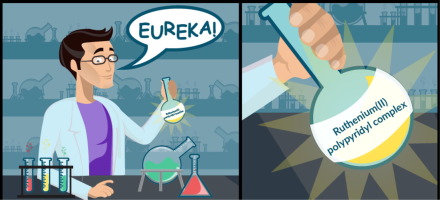Coordination Chemistry Reviews ( IF 20.6 ) Pub Date : 2018-03-09 , DOI: 10.1016/j.ccr.2018.02.013 Mariusz Mital , Zyta Ziora

|
Ru(II) polypyridyl complexes are of great interest for their unique biological, photophysical, optical, catalytic and electronic properties. This class of complexes demonstrates a number of potential therapeutic applications via interactions with DNA, enzymes and cell membranes, leading to cell death. Metal-based drugs have many common mechanisms of action when acting against cancer and bacterial cells. Even though it was discovered over 50 years ago, the best-known anticancer agent is still cisplatin and the high toxicity and potentially serious complications point to the need for improved drug treatments. Similarly, the first antibiotics introduced in the 1930s against bacterial infection started “the golden age of antibiotics”, but the increased number of antibiotic-resistant bacteria has become a global health problem. Recent research has shown that Ru(II) polypyridyl complexes have the potential to be used for the treatment of both cancer and bacterial infections, and in this review the most promising complexes are presented with their anticancer and antimicrobial properties discussed in detail.
中文翻译:

Ru(II)聚吡啶配合物的生物应用
Ru(II)聚吡啶基络合物因其独特的生物学,光物理,光学,催化和电子性质而引起人们的极大兴趣。这类复合物通过与DNA,酶和细胞膜的相互作用显示出许多潜在的治疗应用,从而导致细胞死亡。基于金属的药物在对抗癌症和细菌细胞时具有许多常见的作用机制。即使在50多年前被发现,最著名的抗癌药仍然是顺铂,而且高毒性和潜在的严重并发症表明需要改进药物治疗。同样,在1930年代针对细菌感染引入的首批抗生素开始了“抗生素的黄金时代”,但耐药菌的数量增加已成为全球性的健康问题。


























 京公网安备 11010802027423号
京公网安备 11010802027423号